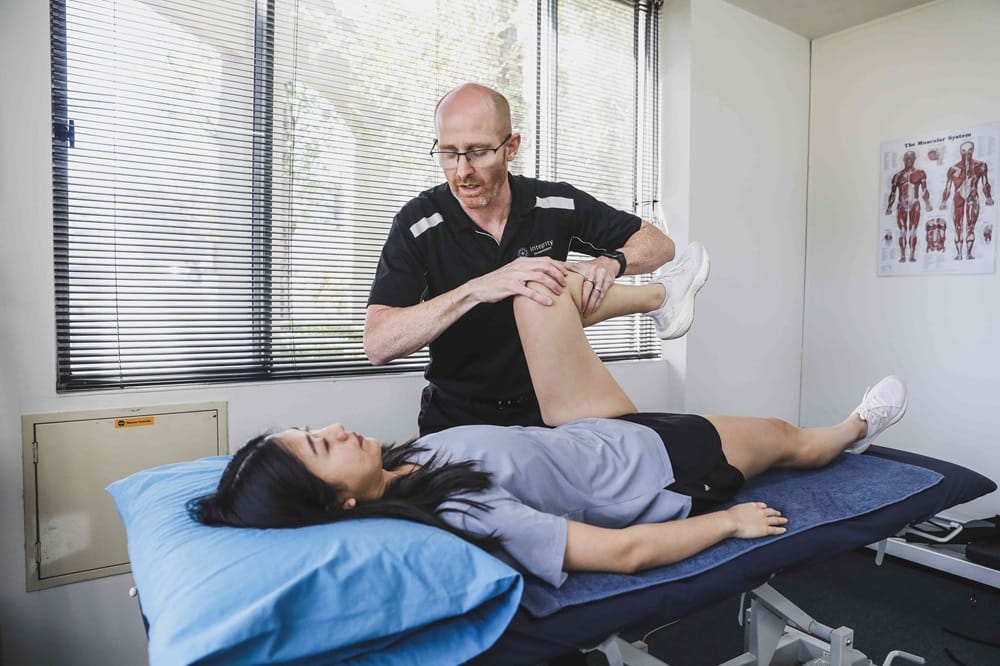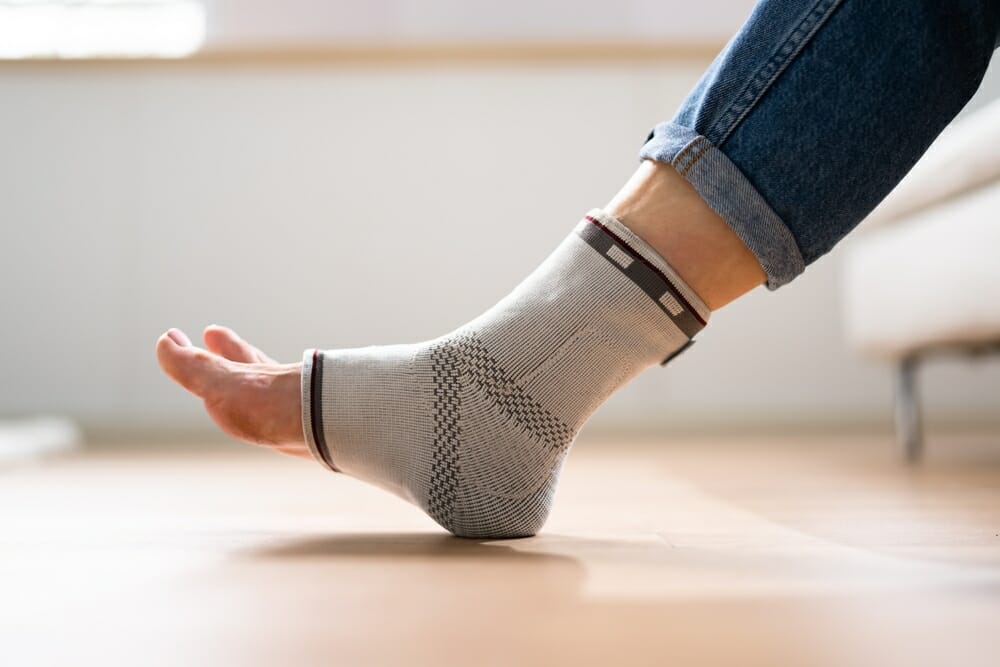
What Is A Sprained Ankle?
If you’re an active person or play a lot of sport there’s a chance you’ve sprained your ankle before. A sprained ankle occurs when the ligaments which connect the bones of your leg to your foot are overstretched. Usually this happens by unintentionally twisting or turning your ankle awkwardly. This causes the ligaments to stretch or tear resulting in injury. The severity can vary from mild, such as a twisted ankle, to moderate or severe sprains.
Your ankle has two key joints. One bends the foot up and down and the other joint turns the foot in and out. Both of these joints can be affected by sprains. This usually happens if you roll your ankle inwards when the foot is in a pointed position (the least stable position for the ankle). This results in the ligaments on the outer side to be stretched which may cause them to tear.
Ligaments have a limited range of motion to keep the joints stable. If you push these limits it can result in an injury. As mentioned previously, ankle sprains are usually caused by injuring the ligaments on the outside of the ankle, but sprains can also happen on the inside of the ankle.
Ankle sprains can happen to anyone of any age. Inappropriate footwear, sports and uneven surfaces are common causes of this injury.
If you do experience this type of injury, a sprained ankle can cause swelling, pain and bruising. There may be pain or discomfort when weight is put on the injured area. The pain is often worse during the first few days.
Symptoms
- Swelling
- Pain
- Tenderness
- Unable to put weight on ankle
- Bruising
- Stiffness
It’s important to seek professional advice when you have injured your ankle. Your physiotherapist will be able to determine the severity of the sprain.
Risk Factors
The most common risk factor for a sprain is previous injury. If you’ve had a sprained ankle before this may increase your risk of another injury in the future. However, you can reduced this risk with proper rehabilitation exercises. Damaged ligaments affect the brain’s ability to know where the foot is in space, making it easier to reinjure. Rehabilitation exercises are specific to each patient and correct for inadequate strength, joint position sense, foot and ankle coordination and reaction timing.
Sprained Ankle Treatment
Depending on the severity, you may need an x-ray to check for any fractures. If the injury is significant an ankle brace or orthopaedic boot may be needed to allow proper healing. Your doctor may want to prescribe pain or anti-inflammatory medication, if necessary. Repeated ankle sprains may require surgery in some cases to stabilise the ligaments but most will recover completely with specific exercise rehabilitation tailored to the patient.
Physio For A Sprained Ankle
Physiotherapy treatment for sprained ankles can help to control inflammation and provide pain relief. It also helps by increasing ankle range of motion, strengthening weak muscles and improving foot and ankle control. Physio for an ankle sprain can help you to return to training or competition faster, restore normal ankle function and reduce the risk of reinjury.
The treatment will vary depending on the severity but following a specific diagnosis will usually include appropriate stabilisation for a period of time depending on the severity of the injury, followed by joint mobilisation and a tailored exercise program/rehabilitation to increase strength and ankle proprioception.
Prevention
To reduce the risk of a sprained ankle research shows that strength is the most important so be sure to warm up before exercise and wear good supportive shoes but more importantly the right rehab program is needed for your situation. If you have had a recent injury you might need to brace your ankle for exercise for a short while but with proper rehabilitation this usually won’t be needed in the long term. It’s important to speak to your physiotherapist for advice on this so you can feel confident as you return to normal activities.




